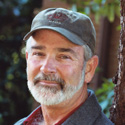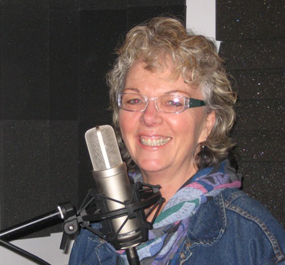

Join BirdNote tomorrow, November 30th!
Illustrator David Sibley and actor H. Jon Benjamin will face off in the bird illustration battle of the century during BirdNote's Year-end Celebration and Auction!
During the days of mammoths and saber-toothed cats, California Condors thrived over much of the continent. Today, they're one of the most endangered birds in the US. The condor's main survival problem is high mortality due to lead poisoning. Condors eat animal carcasses, often containing lead from hunter's bullets. California law now requires hunters to use non-lead ammunition in the condor's home range - a change that could enable condors to once again thrive, and soar, in the wild.
BirdNote®
California Condor
Written by Bob Sundstrom
This is BirdNote.
[Surf breaking along the coast]
It’s a lovely day along the California coast, near Big Sur. A steady, cooling breeze from the ocean pushes a strong updraft along the seaside cliffs. Soaring above is one of our continent’s most spectacular birds – and one of its most endangered – the California Condor.
California Condors are the largest soaring birds in North America, with a wingspan of over nine feet. During the days of mammoths and saber-toothed cats, they thrived over much of the continent. Two hundred years ago, condors were found from California to southern British Columbia.
But by 1987, there were only 27 California Condors left, and these were held in captivity, to foster the species’ return to the wild. Today, there are more than 300 free-flying condors living in the wild, and around 200 or so in captivity. Yet the wild population is not self-sustaining.
Unlike many species, the condor’s main survival problem is not habitat loss - it’s high mortality due to lead poisoning. Condors eat animal carcasses, which can contain lead from hunters' bullets. But a California state law banning the use of lead took effect in 2019. This change could help condors once again thrive and soar in the Golden State.
[https://macaulaylibrary.org/asset/163902 1:03-1:07]
Learn more at BirdNote.org. I’m Mary McCann.
###
Surf sound and ocean waves recorded by John Kessler.
BirdNote's theme music was composed and played by Nancy Rumbel and John Kessler.
Producer: John Kessler
Executive Producer: Dominic Black
© 2014 Tune In to Nature.org August 2017 / June 2023
Narrator: Mary McCann
ID# SotB-CACO-01c-2010-08-02 SotB-CACO-01c
Sources: Birds of North America online; California Condor Recovery Program website.
http://enewschannels.com/2010/06/03/enc11793_181257.php
https://www.fws.gov/cno/es/calcondor/CondorCount.cfm
https://wildlife.utah.gov/condors.html
https://www.nps.gov/subjects/condors/understandingcondors.htm





